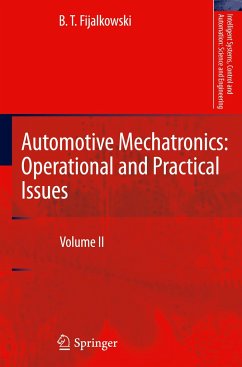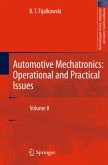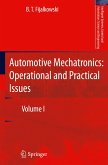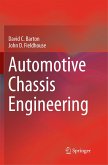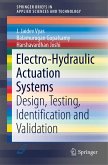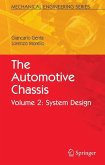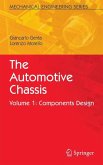This book presents operational and practical issues of automotive mechatronics with special emphasis on the heterogeneous automotive vehicle systems approach, and is intended as a graduate text as well as a reference for scientists and engineers involved in the design of automotive mechatronic control systems.
As the complexity of automotive vehicles increases, so does the dearth of high competence, multi-disciplined automotive scientists and engineers. This book provides a discussion into the type of mechatronic control systems found in modern vehicles and the skills required by automotive scientists and engineers working in this environment.
Divided into two volumes and five parts, Automotive Mechatronics aims at improving automotive mechatronics education and emphasises the training of students' experimental hands-on abilities, stimulating and promoting experience among high education institutes and produce more automotive mechatronics and automation engineers.
The main subject that are treated are:
VOLUME I: RBW or XBW unibody or chassis-motion mechatronic control hypersystems; DBW AWD propulsion mechatronic control systems; BBW AWB dispulsion mechatronic control systems;
VOLUME II: SBW AWS conversion mechatronic control systems; ABW AWA suspension mechatronic control systems.
This volume was developed for undergraduate and postgraduate students as well as for professionals involved in all disciplines related to the design or research and development of automotive vehicle dynamics, powertrains, brakes, steering, and shock absorbers (dampers). Basic knowledge of college mathematics, college physics, and knowledge of the functionality of automotive vehicle basic propulsion, dispulsion, conversion and suspension systems is required.
As the complexity of automotive vehicles increases, so does the dearth of high competence, multi-disciplined automotive scientists and engineers. This book provides a discussion into the type of mechatronic control systems found in modern vehicles and the skills required by automotive scientists and engineers working in this environment.
Divided into two volumes and five parts, Automotive Mechatronics aims at improving automotive mechatronics education and emphasises the training of students' experimental hands-on abilities, stimulating and promoting experience among high education institutes and produce more automotive mechatronics and automation engineers.
The main subject that are treated are:
VOLUME I: RBW or XBW unibody or chassis-motion mechatronic control hypersystems; DBW AWD propulsion mechatronic control systems; BBW AWB dispulsion mechatronic control systems;
VOLUME II: SBW AWS conversion mechatronic control systems; ABW AWA suspension mechatronic control systems.
This volume was developed for undergraduate and postgraduate students as well as for professionals involved in all disciplines related to the design or research and development of automotive vehicle dynamics, powertrains, brakes, steering, and shock absorbers (dampers). Basic knowledge of college mathematics, college physics, and knowledge of the functionality of automotive vehicle basic propulsion, dispulsion, conversion and suspension systems is required.

